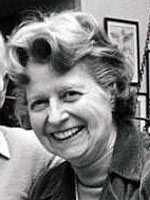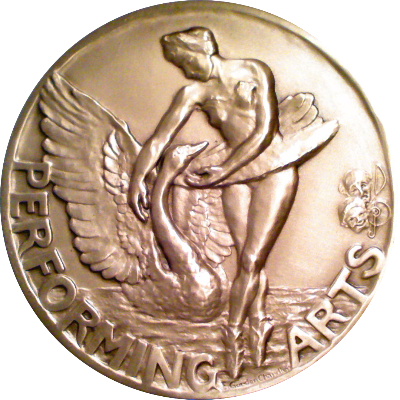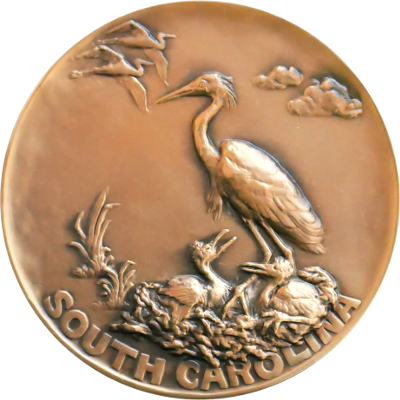Elisabeth Gordon Chandler was born in 1913 in St. Louis, Missouri. Her father, Henry Brace, worked at Abbott Precious Coin Co., a manufacturer of medals and coins, and later became county treasurer. Her mother, Sallee, worked as a bookseller. At a young age, she moved to New York and began studying harp, becoming quite an accomplished harpist. She studied anatomy with Robert Beverly Hale at the Art Students League of New York but decided to focus on the harp. From 1933 to 1946 she was a member of the Mildred Dillinger Harp Ensemble, rising to second harp, yet she never got over her other artistic passion, sculpture. By the 1940s, she was studying sculpture with Edmondo Quattrocchi, an Italian sculptor. Hale and Quattrocchi were most likely the primary influences over her growing style.
From 1940 to 1942 Chandler worked as a Sculpture Assistant to Walter Russell, working on the "Four Freedoms," a monument requested by President Roosevelt to remind the nation of the philosophical foundation of its fight. She also joined the "Musical Therapy Division," an organization to help Veterans. Eventually, Chandler became known as a talented bust sculptor.
On May 27, 1946, she married businessman Robert Kirtland Chandler. For the next sixteen years the couple lived together in New York City before resettling in Old Lyme, Connecticut in 1962. She once said that she was looking for more peace and quiet than she could find in the city. Robert died in 1967, leaving her widowed after twentythree years of marriage. She plunged herself back into work and in 1976 she founded the Lyme Academy College of Fine Arts, an institution still running today. Chandler felt passionately that in the contemporary Western art world, traditional artistic education and representational art was no longer prevalent. The school's mission was to reintroduce those values to the next generation of artists. She devoted the rest of her life to the school, becoming the first professor of sculpture and a noteworthy trustee.
In 1979 Chandler remarried. Her second husband, Laci de Gerenday, was, like her, a renowned sculptor. She had known him for a long time from her involvement with the National Sculpture Society but after the death of his wife their friendship had grown deeper. He moved to Old Lyme and assisted her at the Academy, becoming a professor of sculpture as well. Sadly, de Gerenday died in 2001, leaving Chandler widowed again.
Chandler and de Gerenday are the only couple to have both been showcased by the Society of Medalists series chronologically, de Gerenday having been selected to design the 103rd medal and Chandler the 104th. In addition to the Society of Medalists medal she created numerous other medals, including the United States Capitol Historical Society's George Washington — 250th Anniversary Medal, and the Benjamin Franklin, Albert A. Michelson and Jonathan Edwards medals for the Hall of Fame for Great Americans Series.
She won many awards and gained recognition and membership from the National Sculpture Society, the National Academy of Design, the American Artists Professional League, and the International Institute of Arts and Letters. Through her life, Chandler was married twice and, sadly, widowed twice. She took her first husband's last name, Chandler, and kept it as her professional name even when she remarried. She had no children of her own but on the occasion of her 90th birthday Lyme Academy threw her a birthday party. Hundreds of her former students showed up to wish her well. She just said:
"I never had any children. Now I have thousands.
Elisabeth Gordon Chandler died in Middletown, Connecticut at the ripe old age of 93.
Sourced mainly from Wikipedia and the Lyme Academy's website. Many thanks to Loree Bourgoin, Sue Joffray, and Diana Atwood Johnson from Lyme Academy for their assistance.





